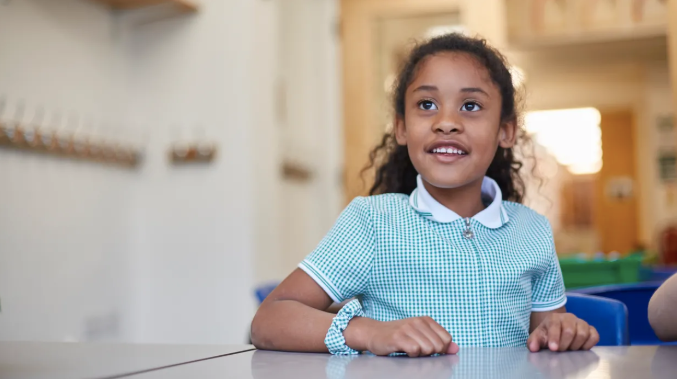This is how to make the most out of a short parent-teacher conference, Mama

For the first time, I sat on the other side of the conference table. My 4-year-old daughter's teacher apologized for placing her cell phone visibly on the table as it started counting down. 11:59, 11:58, 11:57. She was trying desperately to stick to an almost impossible schedule.
I had 12 minutes to hear everything about my daughter's classroom experience—her academic performance, behavior, frustrations, challenges, goals, as well as flip through a binder of her work that probably took her teacher way more than 12 minutes to prepare.

As a special education teacher, I have conducted many parent-teacher conferences, so I'm very familiar with one-on-one time with parents. After almost nine years, I've figured out how to get the best out of this short period of time.
The most important thing to remember during a parent-teacher conference is NOT to feel timed—which is hard to do with a clock counting down before your eyes and the buzzing of parents gathering by the door waiting for their turn. But even though you only have a few minutes, this should not be the only chance to communicate with teachers. If it feels like is, the conference is a great time to fix that.
Here are five ways to get the most out of a parent-teacher conference:
1. Be a good listener.
In most cases, the teacher should have prepared some information to share with you. It's okay to just listen and not feel pressured to interrupt with questions. If you decide to share anecdotes, make sure they are short and to the point—don't waste time on frivolous topics.
2. Come prepared with at least three questions.
You may have specific questions already. If not, consider asking questions about how your child interacts or plays with her peers or how they participate in classroom activities. Some examples:
- Does he ask questions or wait to be called on?
- Does she transition well between activities?
- Does he have difficulty working independently?
3. Ask to review your child's work after the conference is over.
It's a good idea to take their work into the hallway so the next parent can start their conference. That way you can take your time looking at the work and it doesn't take away from your 12 minutes.
4. Create a plan at your conference.
Depending on your child's goals, you can make a plan at the conference of how you can help your child at home. For example, if your child is having difficulty using scissors, the teacher may have suggestions for activities you can do together at home or materials you should have access to around the house. If you'd like to communicate more regularly with the teacher, you can decide together the best way to consistently share helpful information. The teacher may offer to create a weekly progress report or a special notebook that both of you write in daily. Whatever your plan is, you should leave the conference with a clear understanding of your role and responsibility as well as the teacher's in making it work.
5. Set up a follow-up meeting.
Teachers understand that 12 minutes twice a year is not enough time to discuss all of your concerns. You may need to set up an additional meeting to continue the conversation or to re-evaluate the plan you've put in place. This can often be done over the phone or at a time more convenient than the scheduled conferences.
source: mother.ly




